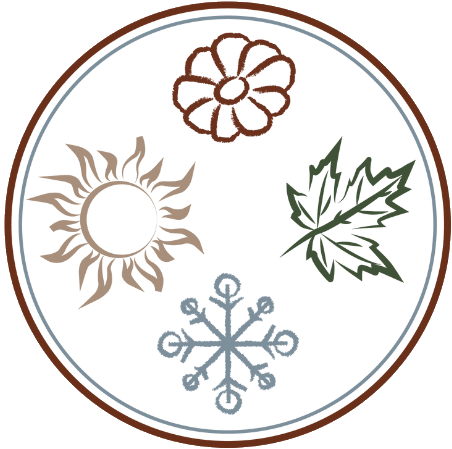You can feel it in the air. Colder temps are coming. For some, this is a welcome respite. For others, it’s an unwelcome change. Whichever it is for you, there are some steps you can take to help keep your home toasty warm and fully functional when the cooler temps arrive. We partnered with HomeZada to compile these cold weather prep tips for you.
Start Outside: Preparing Your Yard for Cold Weather
General Yard Care
As the cold weather approaches, taking the time to prepare your yard is essential. Start by raking leaves and creating a compost pile. Alternatively, you can mulch leaves easily by running a few passes over the grass with your lawn mower. Investing in a mulching blade or mower if you have a lot of leaves offers several benefits, including less physical labor, improved soil health, and cost-effectiveness.
Inspect trees for loose limbs or branches and remove them to prevent damage from snow and ice. Clean gutters and drains to ensure proper water flow and prevent potential damage to your roof or home. Consider covering or storing outdoor furniture to protect it from the elements, and winterize garden beds to protect sensitive plants from frost. By following these simple steps, you can maintain the beauty of your outdoor space and prevent potential issues in the spring.
Check for and Repair Air Leaks
Once you’re done outside, it’s time to start prepping inside your home. Air leaks allow cold air and sunlight into your home as well as create a situation where moist air and mold can enter inside the walls.
Finding air leaks takes a little work, but they’re usually easy enough to fix once you’ve found them.
Protect Your Pipes
Freezing pipes can create real problems. The expansion and contraction that occurs during freezing and thawing can lead to a burst pipe, flooding basements, and posing other risks.
Insulate any exposed pipes and drain pipes that lead to outside spigots to prevent freezing.
Want More Help? Check out this fall home organizing checklist.
Check Your Chimney
You should consider hiring a professional to do this. While wood stoves and fireplaces are wonderful during the cooler months, a blocked, clogged, or dirty chimney poses significant risks. Smoke could enter your home during use, or worse – a house fire could occur. Carbon monoxide is also a concern with a chimney that isn’t properly maintained.
Ceiling Fans
Proper use of ceiling fans can help circulate warm air. This is particularly helpful in larger spaces or homes with higher ceilings. Simply use the switch on the fan to change the blade rotation to clockwise. This will push the warm air down and help save you on heating costs.
5 Home Organization Projects to Tackle This Winter

Rearrange Furniture
Shifting the furniture may also help keep your home warmer if you have radiators or baseboards for heat. Large pieces of furniture near these heating elements hold a lot of the warmth, so moving them around will increase the flow of warm air throughout your home.
Declutter
You know we’re fans of decluttering here! While it’s not strictly cool-weather related, the colder months can be a great time to work on it because you’re already staying inside more. It’s a great chance to turn decluttering and organizing into a habit.
More tips for maintaining your home and creating a home-maintenance plan.
Join Our Mailing List










